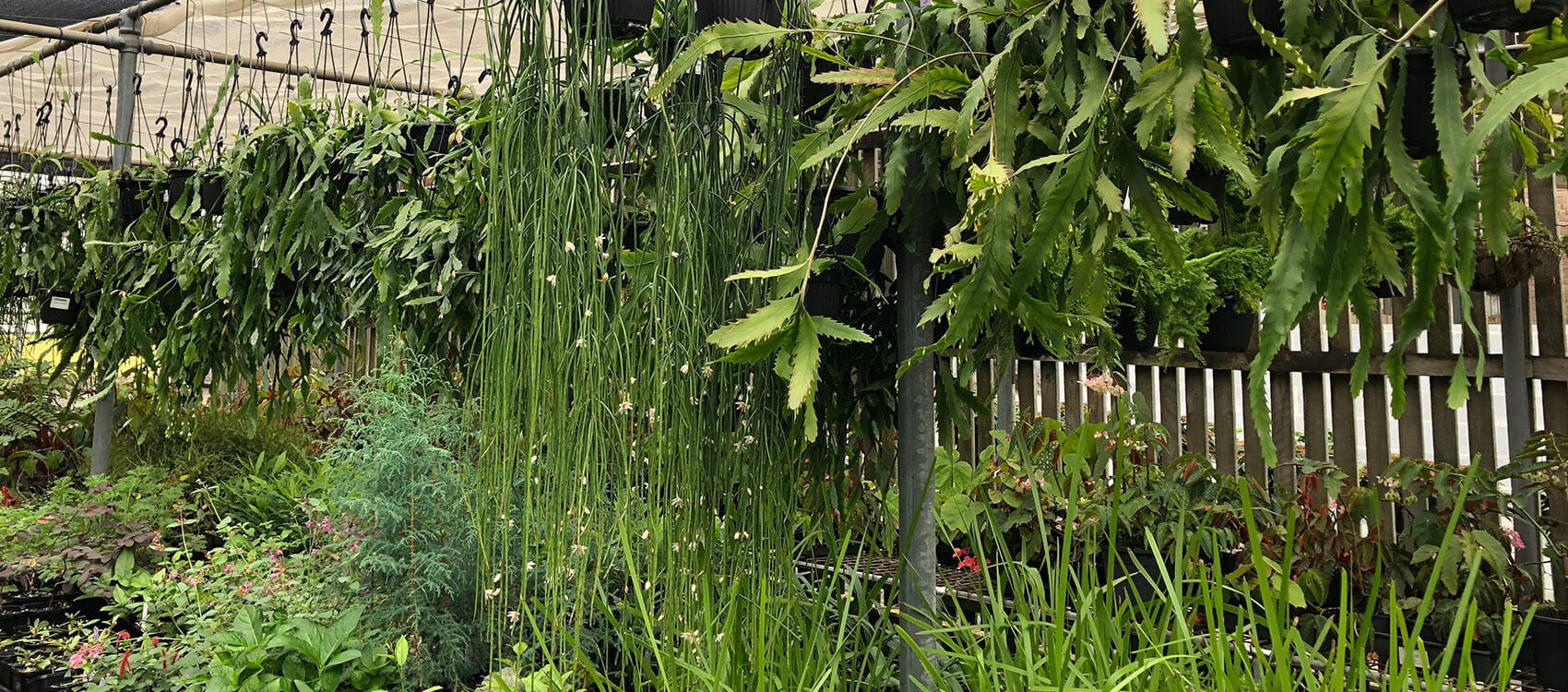As epiphytic plants their ability to survive in the canopies of trees makes these stunning plants incredibly tough and rewarding to grow.
In nature they are mostly found in the region of Central America, the northern part of South America and the Caribbean. Rhipsalis do not confirm to our stereotypical image of a cactus with an armoured coat of protective spikes. Some can be hairy but none have the spikes or spines traditionally associated with other members of the cactus family.
If you plan to grow Rhipsalis here are a few tips to get you started.
Use a potting mix that is well drained like a general cacti or orchid mix. They grow well in hanging baskets or vertical gardens where their foliage has space to hang over the edge. Give them a spot with morning sun or bright indirect light. In summer give your Rhipsalis plenty of water but ensure they have good drainage. Their roots will rot of they sit in stagnant water.
If you want vigorous growth, they will respond well to a monthly application of half strength liquid fertiliser in the warm season. In subtropical climates they will grow well outdoors in a semi shaded position or in a tree as nature intended.
In cooler regions these plants are fantastic indoors. Propagation of most Rhipsalis species could not be simpler. They will often produce aerial roots as they look for an anchorage point. They are propagated from cuttings which root easily, just make sure your propagation mix is free draining and keep the humidity up around the cuttings.
There are many species of Rhipsalis available from specialist growers and nurseries such as Growing Friends Plant Sales at the Royal Botanic Garden Sydney.
These are some of our favourites
Rhipsalis crispata are endemic to Brazil and grows best in a part shaded position with morning sun.

Rhipsalis campo-portoana are wonderful plants for a hanging basket in a semi shaded position.

Rhipsalis catenulata are another great plant for hanging baskets or vertical gardens.
Rhipsalis pilocarpa is a beautiful plant with stunning red fruit and is known as the hairy stemmed Rhipsalis.
Rhipsalis clavata are great hanging basket plants that have an abundance of white flowers when in bloom.

Rhipsalis puniceodiscus are a popular variety with pretty white flowers and orange fruit.

Let us know your favourite variety of Rhipsalis by tagging us on Instagram or Twitter using @botanicsydney.
If you are a journalist and have a media enquiry about this story, please click here for contact details and more information.


